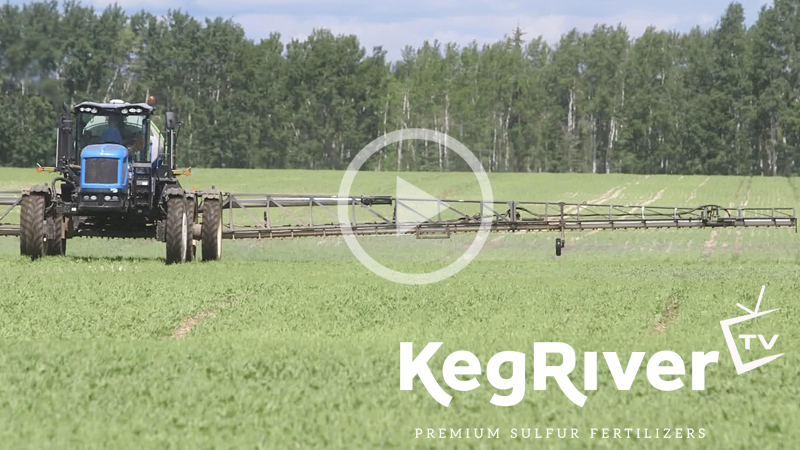Watch: When to Apply Elemental Sulfur? 3 Advantages of Fall Application

Sulfur is one of the four essential macronutrient that agricultural crops require for healthy growth and development. Yet when it comes to priorities at seeding time, it often takes a back seat to other essential inputs.
So what if we told you that not only could you shift sulfur application to the fall to redistribute workload and get a jump on the next season, but that there are several benefits to doing so.
In areas of North America where crops are not grown over the winter months, there are Operational, Agronomical, and Economical Benefits behind fall-applied elemental sulfur. (WATCH VIDEO–or read on!)
1. Operational Benefits
As anyone can attest, springtime is incredibly busy for farmers. There is a lot of work to do, and only so much time and resources available to get down all required inputs.
“Any time you can move an operation that’s agronomically sound from the spring to the fall, you lessen the pressure in the spring,” says independent agronomist, Ray Dowbenko.
By scheduling elemental sulfur application after harvest, you make room in the applicator for other nutrients, and reduce drill fill and downtime. Elemental sulfur can be piggybacked off of other fall field work – whether it is tillage, smoothing out ruts or making another nutrient application that’s compatible with an elemental product.
2. Agronomic Benefits
Broadcasting elemental sulfur in the fall will improve the breakdown of the pastille. By leaving it on the surface over winter, the combination of rain, snow and freeze/thaw events hasten the breakdown into smaller granules – which can be more easily oxidized by microbes in the spring. The smaller the particles, the more surface area that is exposed to these microbes.
Dowbenko explains it in terms we can all understand.
“The degradable granule breaks apart and it turns to ‘mush’, scientifically speaking. And it exposes many of the finer particles for that oxidation.”
In other words, this gives the elemental a headstart in the conversion to plant-available sulfate in the spring.
Dowbenko recommends broadcasting elemental sulfur in the fall. He suggests it be left on the surface to be exposed to the environment until spring, at which time it can be incorporated with spring fieldwork (eg. seedbed preparation or the actual seeding operation).
3. Economic Benefits
There is also an economic benefit to applying elemental sulfur in the fall.
Often the price of fertilizers can jump between growing seasons, so farmers can mitigate risk by purchasing in fall. By applying fertilizer in the fall, farmers can also save the associated retail storage costs – or free up space in their own bins.
On top of that, Dowbenko raises the fact that elemental sulfur contains a much higher sulfur analysis than other sulfur fertilizers: typically 85% to 90%.
“If I’ve got something that’s 90% of a given nutrient, or I’ve got something that’s 24%, when you work out the cents-per-pound, you see there’s a quite disparate difference in the unit cost. The high analysis products (provide) a better value for your dollar spent.”
Bonus Benefit: Reduced Leaching
This final point spans all three benefit categories. Unlike sulfate fertilizers, elemental sulfur is less prone to loss by leaching below the root zone in the spring.
“With fall application of elemental sulfur, you have most of it still in the elemental form. It’s going to be exposed and open for oxidation in the spring, but because it hasn’t converted to sulfate yet, it’s not going to be prone to leaching,” Dowbenko says.
That provides extra insurance that farmers won’t lose out on their sulfur investment, and extra assurance that crops will get the season-long sulfur they require. All while contributing to greater operational efficiency.
Timing is Everything
Ray Dowbenko is a firm believer in the agronomic benefits of broadcasting elemental sulfur in the fall.
“Fall application of sulfur has been something that’s been gaining more and more interest and popularity among prairie farmers, eastern Canadian farmers and certainly American growers in the northern Great Plains states and the Northern Tier states.
“Those who follow a fall application program for elemental sulfur will set themselves up for greater success in the incoming crop,” he adds.
Saving money and shifting workload to a less busy period are the cherries on top.
Trust Keg River for your fall sulfur application
For superior degradability, ask for Keg85S™ or Keg90S™ by name at your local fertilizer retailer. [Learn More]




